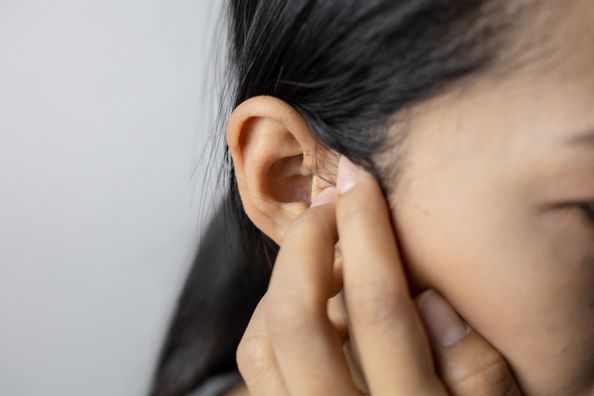Otosclerosis, or ear drum scarring, can affect patients at any age and generally worsens with time. After a patient undergoes a hearing test or audiogram, an otolaryngologist can determine if a patient has ear drum scarring and if it can be treated.
On rare occasions, a patient may develop cochlear otosclerosis, which is a progressive and irreversible hearing loss. Unfortunately, this specific problem cannot be treated surgically.
Treatment
Surgery is the only treatment that can reverse or improve hearing loss. There are no medical (e.g. medications) treatments which will correct or improve the hearing in patients with otosclerosis. Occasionally, fluoride treatments may reduce the severity of abnormal ringing or tinnitus associated with ear drum scarring.
Stapedectomy
A stapes operation may be recommended for suitable patients with scarring. This operation was first performed in 1956 and can be safely performed under local or general anesthesia. Patients typically go home the same day from the hospital.
Surgery involves removing the stapes bone under a microscope and replacing it with a prosthesis that will allow sound to be transmitted to the inner ear. Extremely fine instruments are used to remove the diseased bone. A laser may be used during the operation. Over 80 percent of patients who undergo stapedectomy have improved hearing after surgery. A small percentage of patients have unchanged hearing and, on rare occasions, hearing may be worse after surgery.
If you do not qualify for surgery or do not wish to undergo the operation, a hearing aid may be helpful, although it will not provide complete restoration of hearing loss.
Frequently Asked Questions
What are common side effects after surgery?
Most patients may experience temporary dizziness or unsteadiness after surgery. These side effects usually disappear over a period of hours to days. Unusual side effects may include ringing in the ears.
What should I expect after surgery?
Temporary pain, if any, is controlled with medications. After surgery, hearing will not be optimal as the healing process occurs. You should avoid physical exertion and air travel after surgery for 2 weeks.
Does the surgery require general anesthesia?
No. Surgery may be done under local sedation. Surgery is usually day surgery and patients return home the same day.
After Surgery
It is normal to hear unusual sounds and expect some discomfort after surgery. Although some patients feel slight unsteadiness, call our office if you have severe dizziness, ringing, or other problems.
For 2 weeks after surgery:
- Change cotton ball in the ear daily or as needed
- Avoid heavy lifting or exercise
- Keep your ear clean and dry
- Avoid blowing your nose
- Avoid air travel.
Surgery Risks
Temporary or permanent dizziness or ringing; temporary change in taste; in rare instances, worse hearing loss.
Surgical Results
85% complete improvement (elimination of conductive hearing loss), 10% partial improvement, 5% no change, 1% worse hearing.
For more information on Otosclerosis, schedule an appointment with an Otolaryngologist (ENT).
Quick Reference
What is Otosclerosis?
A disease that involves abnormal fusion of the stapes bone to the inner ear. This disease can be passed from generation to generation.
Treatment Options
- Microsurgical replacement of the stapes bone with a prosthesis.
- Alternatives to surgery: Hearing aids.
Health Topics:







